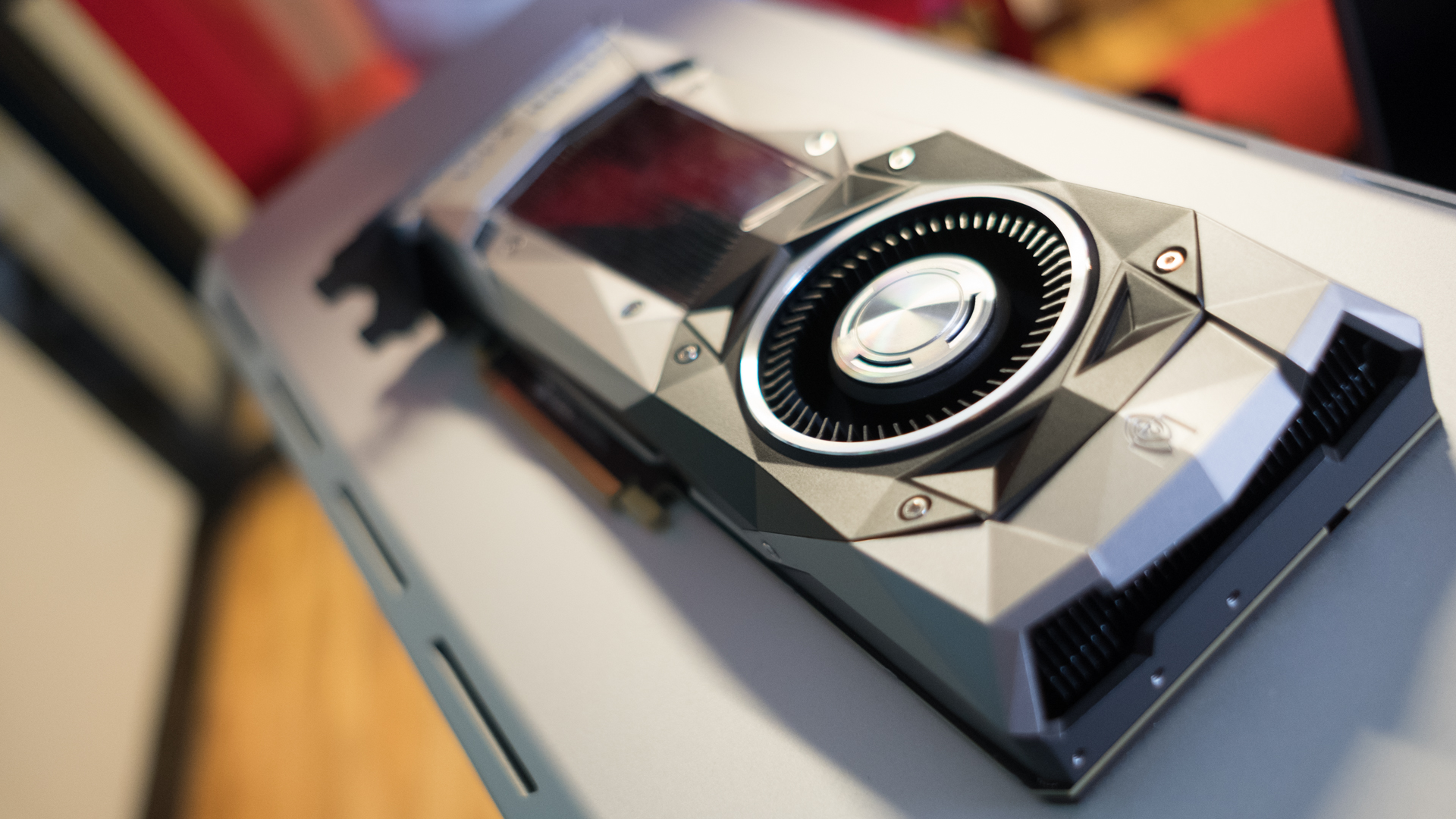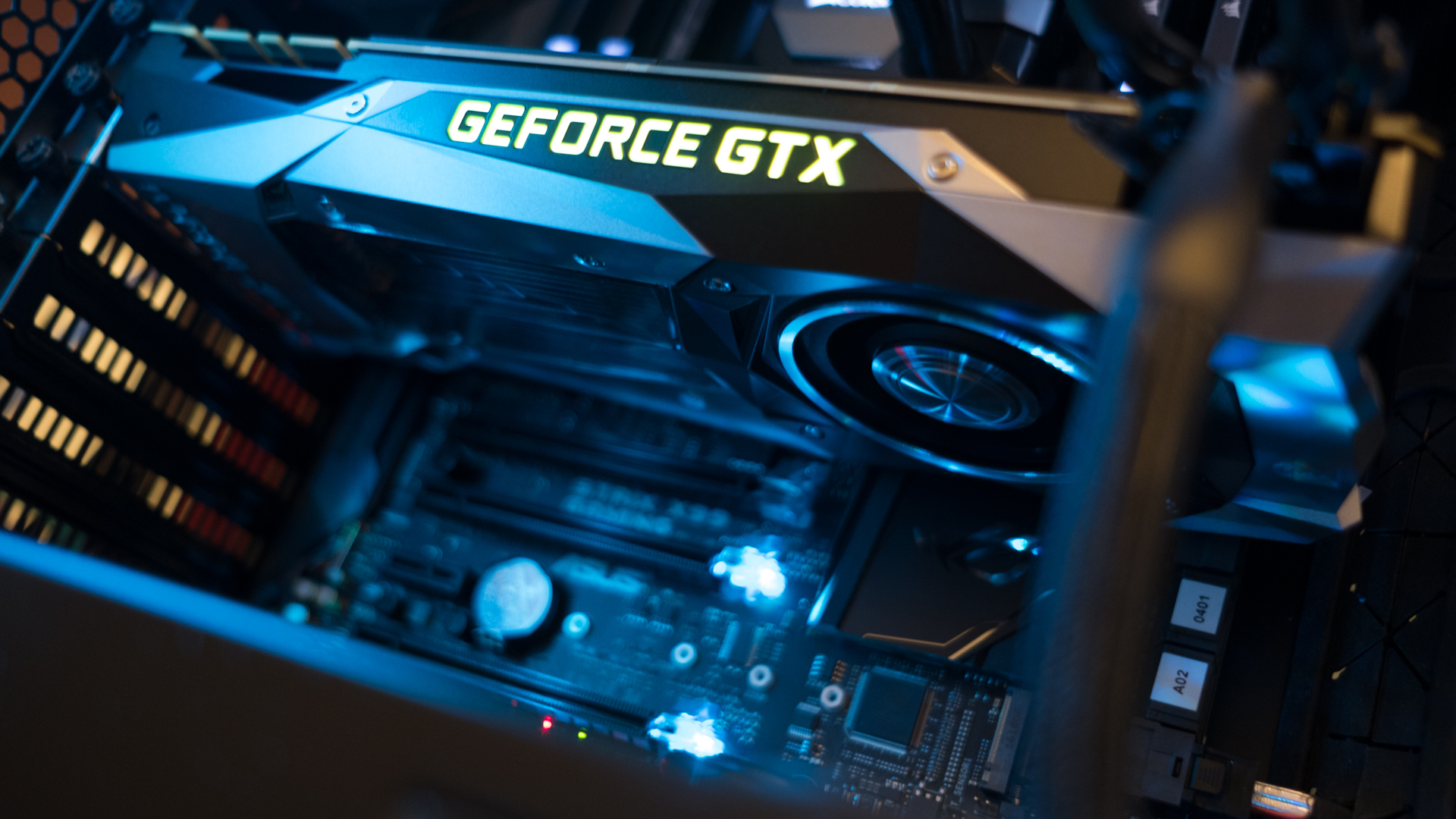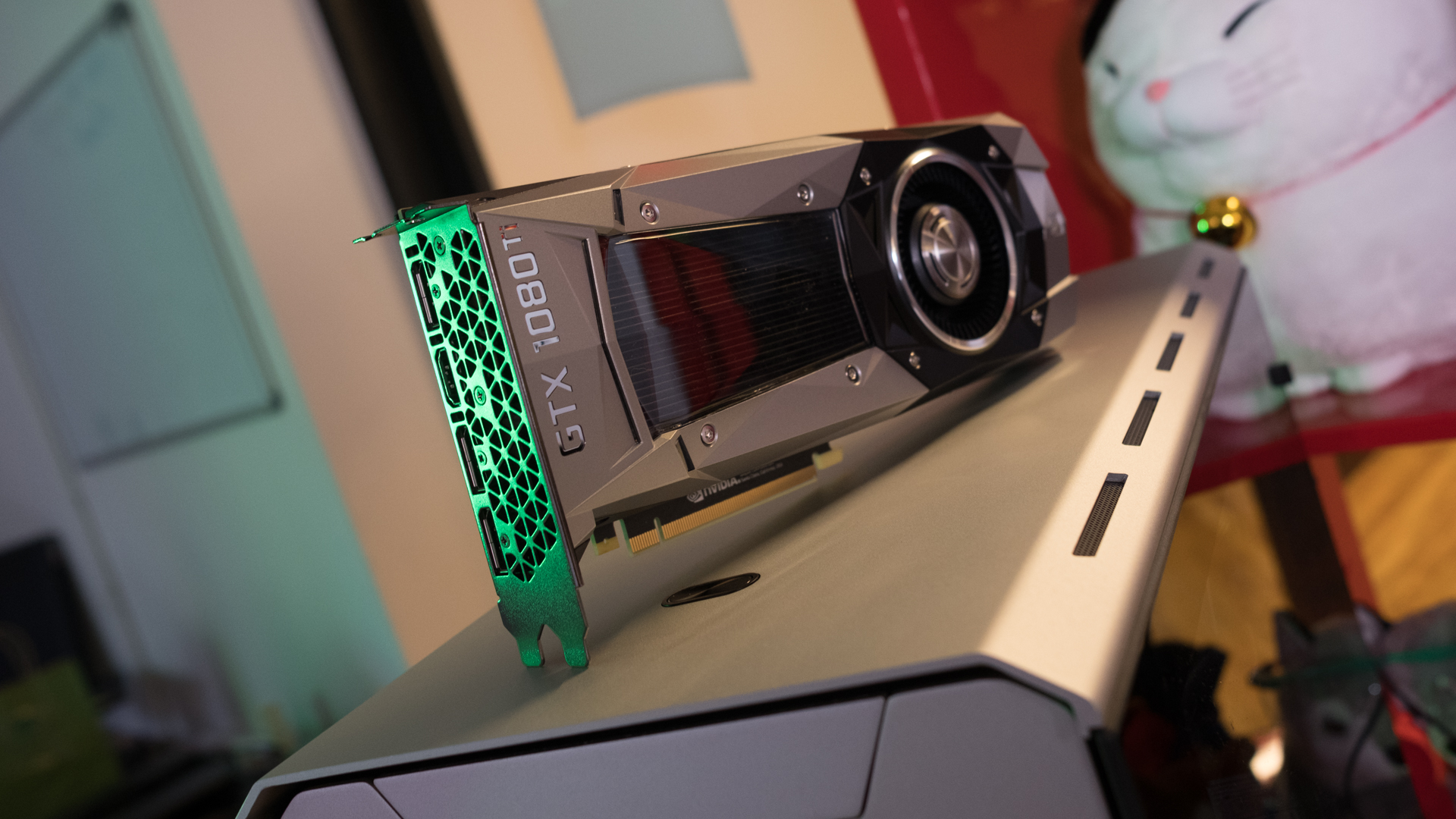TechRadar Verdict
Crazy-powerful and frosty-cool, the Nvidia GTX 1080 Ti is the most powerful graphics card yet - and hits a pricing sweet spot.
Pros
- +
Titan X-equivalent gaming performance
- +
Pushes the limits of Pascal
- +
Improved cooling
Cons
- -
A pricey investment for most
Why you can trust TechRadar
The Nvidia GeForce GTX 1080 Ti was one of the most anticipated graphics cards when it came out in 2017. The 1080 series was Nvidia’s top-end GPU for gamers, and this more recent version outpaced the mighty Titan X in many areas.
Next Nvidia Shield Tablet could be a 2-in-1
Nvidia expands GTX 16-Series with new mobile graphics and desktop GTX 1650
The Nvidia GeForce GTX 1080 Ti will set you back $699 (£699, about AU$930) – the same as the pre-discount GTX 1080. The Nvidia GeForce GTX 1080 Ti brings performance that can match the Titan Xp most of the time. Beyond being one of the most powerful consumer graphics cards of all time, the GTX 1080 Ti is a showcase of what Nvidia’s Pascal architecture was, and still is, capable of. Even in the face of Nvidia Turing cards like the RTX 2080 and 2080 Ti, the GTX 1080 Ti still stands up to the test of time.
Since the release of the GTX 1080 Ti we've seen a range of manufacturers produce their own spins on the GPU, so check out our list of the best Nvidia GTX 1080 Ti graphics cards.

CUDA cores: 3,584
Texture units: 224
ROP units: 88
Base clock: 1,480MHz
Boost clock: 1,582MHz
Video memory: 11GB GDDR5X
Memory clock: 5,505MHz
Memory data rate: 11Gbps
Form factor: Dual-slot
Power connectors: 1 x 6-pin, 1 x 8-pin
Ports: 3 x DisplayPort 1.4, 1 x HDMI 2.0
Specifications
The Nvidia GeForce GTX 1080 Ti is packing 3584 CUDA cores, 224 texture units and 88 ROPs. It comes with just a notch less video RAM than the god-like Titan X, but the 1080 Ti’s 11GB complement of GDDR5X VRAM is tuned to a faster 11Gbps – clearly Nvidia is a fan of Spinal Tap – making this Nvidia’s quickest Pascal card.
There’s no question the Nvidia GTX 1080 Ti is a performance beast, running at a base 1480MHz frequency and 1582MHz when boosted.
True, the GTX 1080 boosts to a higher 1,733MHz; however, the Ti model is running with more cores and VRAM, boosting performance in both benchmarks and real-world gaming.

Design and cooling
If you’ve seen one of Nvidia’s self-produced Pascal graphics cards, you’ve seen them all. Externally, the original GeForce GTX 1080 and Nvidia’s latest Ti (or tai as the company pronounces it) card are virtually indistinguishable.
Not that we’re complaining. Nvidia’s design for its Founders Edition cards was a hit when it first debuted and the modern, angular look still appeals. One little change users might notice is the lack of a DVI port; don’t fret though, as the GTX 1080 Ti comes with an adapter you can plug into a DisplayPort.

Getting rid of the DVI port has made more room for a better cooling solution. In fact, Nvidia says its new high airflow thermal solution provides twice the airflow area of the GeForce GTX 1080's cooling system.
Our testing corroborates those claims. Even at a full load, the GTX 1080 Ti stayed at a cooler 75 degrees Celsius while the GTX 1080 peaked at 82 degrees Celsius. Of course, you can push both cards to the edge of 91 degrees Celsius by adjusting the power limiter and overclocking the GPUs.

CPU: 3.0Ghz Intel Core i7-6950X Broadwell-E (deca-core, 25MB cache, up to 4.0GHz)
RAM: 32GB Vengeance LED DDR4 (3,200MHz)
Motherboard: Asus ROG Strix X99 Gaming
Power Supply: Corsair RM850x
Storage: 400GB Intel 750 Series U.2 SSD (NVMe PCI 3.0 x4)
Cooling: Corsair Hydro Series H115i extreme liquid cooler
Operating system: Windows 10
Performance
4K gaming at 60 fps has long been considered the holy grail of PC gaming, and the Nvidia GeForce GTX 1080 Ti was the closest we came up until Nvidia Turing launched a few years later. Getting a silky smooth gaming experience in Ultra HD will depend on which games you’re trying to play, though.
We were able to achieve frame rates in the 50 to 60 range with games like Battlefield 1 and Doom. That’s not an easy feat – but these are still two of the most optimized games on the market.
Then, Nvidia released a DirectX 12 optimized Game Ready Driver that helped us run Rise of the Tomb Raider at a solid 40 fps, not quite matching the Titan X’s 57 fps, but double the 20 fps we saw with the Nvidia GeForce GTX 1080.

Those are best-case scenarios, and you shouldn’t think the Nvidia GTX 1080 Ti is a bulletproof solution for 4K gaming. Total War: Attila for one thing brought the Titanium-power GPU to its knees as it struggled to render the game at a just-playable 26fps.

Getting to the pure-performance testing 3DMark: FireStrike Ultra benchmark, the GTX 1080 Ti completely demolishes its forebears by a difference of 2,000 to 4,000 points across the board. More impressively, this ultimate GeForce skips ahead of the Titan X too.
The most mind-blowing bit is that the Nvidia GTX 1080 Ti is doing all of this without any overclocking. Nvidia claims the card can be pushed as far as 2GHz, and while we haven’t quite pushed it that far yet we have been able to achieve a stably running system at 1.7-1.8GHz range.

Final verdict
The Nvidia GeForce GTX 1080 Ti is one of the most impressive graphics cards of all time. It’s remarkably more powerful than the original GTX 1080 and matches the Titan X’s gaming performance. You’re also looking at one of Nvidia’s coolest-running cards with more than enough overclocking headroom.
If you’ve been pining for Nvidia’s top GPU, but couldn’t stomach the $1,200 (£1,099, AU$1,599), the Nvidia GTX 1080 Ti looks much more appetizing at $699 or £699 (about AU$930).
Kevin Lee was a former computing reporter at TechRadar. Kevin is now the SEO Updates Editor at IGN based in New York. He handles all of the best of tech buying guides while also dipping his hand in the entertainment and games evergreen content. Kevin has over eight years of experience in the tech and games publications with previous bylines at Polygon, PC World, and more. Outside of work, Kevin is major movie buff of cult and bad films. He also regularly plays flight & space sim and racing games. IRL he's a fan of archery, axe throwing, and board games.

